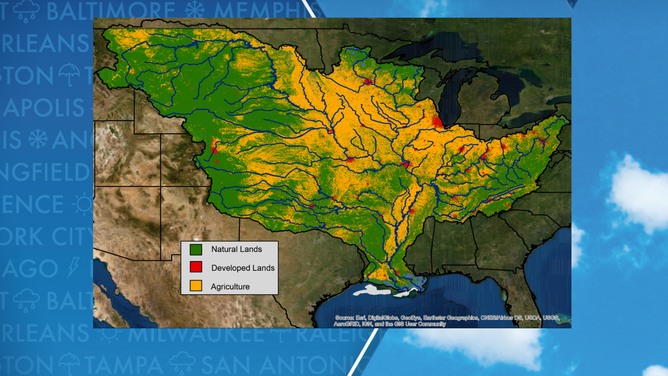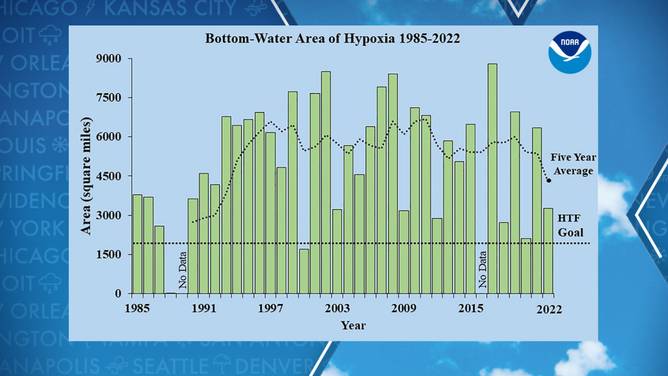Below-average ‘dead zone’ expected in Gulf of Mexico this summer
The Mississippi River watershed is a source of a large amount of the pollutants that wind up in the Gulf of Mexico. Low oxygen levels in waterways hinder marine life.
'Eco-Mermaid' breaks world record to bring attention to ocean plastic pollution
A swimmer, wanting to bring attention to oceanic plastic pollution, broke a world record, swimming 26.22 miles with a mono-fin, similar to a dolphin tail. She picked up trash throughout the nearly 12 hour swim.
NOAA expects a smaller than average "dead zone" in the Gulf of Mexico this summer which may be tied to reduced discharges from the Mississippi and Atchafalaya rivers.
The agency’s outlook expects the zone to expand outward over a region of 4,155 square miles, which is about 1,200 square miles smaller than average.
This zone is characterized by low oxygen levels created by runoff pollution, which are harmful to the ecosystem and produce fish kills.
The region is also referred to as a hypoxic area by marine biologists and is primarily a result of excess runoff pollution from human activities throughout the Mississippi River watershed.
According to the U.S. Geological Survey (USGS), discharge from the Mississippi and Atchafalaya rivers was about 33% below average as late as May, with both nitrate and phosphorus loads below long-term averages.
WHAT YOU SHOULD KNOW ABOUT THE SO-CALLED GULF OF MEXICO ‘DEAD ZONE’

The Mississippi River watershed is a source of a large amount of the pollutants that end up in the Gulf of Mexico.
(USGS / FOX Weather)
NOAA said the chemical compounds are notorious for leading to an overgrowth of algae, which eventually dies and decomposes, leading to a reduction in oxygen.
These hypoxic areas form every summer and are directly tied to agriculture production and other human activities along the Mississippi River watershed.
The land area and associated waterways encompass over 40% of the continental U.S. and cross into nearly half of all states.
According to experts at Louisiana State University, the dead zone can begin as early as April and peaks during the summer.
This is the sixth year NOAA has produced a dead zone forecast from modeling data derived from monitors along important rivers.
"USGS monitoring of the Mississippi-Atchafalaya watershed provides valuable information on where sources contribute nutrients across the watershed," Don Cline, an associate director for the USGS Water Mission Area, stated. "This information can help guide management approaches to reducing nutrients in local rivers and ultimately in the Gulf."
DUNGENESS CRAB DIE-OFF UNDERWAY ALONG US WEST COAST

Annual size of the hypoxic zones in the Gulf of Mexico since 1985. The black dashed horizontal line indicates the target goal established by the Mississippi River/Gulf of Mexico Watershed Nutrient Task Force.
(FOX Weather)
If NOAA’s estimate verifies, it’ll be the second year in a row the dead zone will have come in below the five-year average.
The last time the zone was larger than the average amount was in 2021, when estimates put the region at about 6,334 square miles.
A task force made up of various state and federal agencies is working to decrease oxygen depletion with a goal of reducing the hypoxic zone to about 2,000 square miles by 2035.
"With new investments from the Bipartisan Infrastructure Law, the Hypoxia Task Force is taking action to accelerate nutrient load reductions from the Mississippi River Basin and reduce the size of the hypoxic zone," Brian Frazer, director of the U.S. Environmental Protection Agency Office of Wetlands, Oceans, and Watersheds, said in a statement. "Together, the Task Force will continue to tackle the challenge of Gulf Hypoxia. This annual forecast is a key metric that informs our collective efforts."
